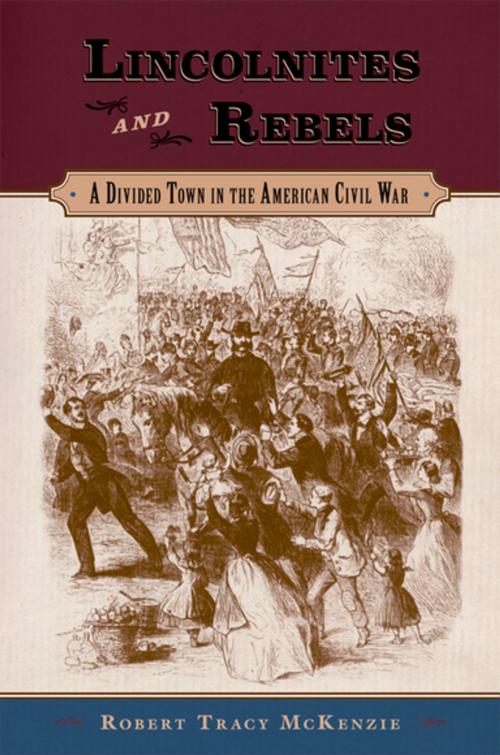Lincolnites and Rebels
A Divided Town in the American Civil War
Nonfiction, History, Americas, United States, Civil War Period (1850-1877)| Author: | Robert Tracy McKenzie | ISBN: | 9780199884711 |
| Publisher: | Oxford University Press | Publication: | November 9, 2006 |
| Imprint: | Oxford University Press | Language: | English |
| Author: | Robert Tracy McKenzie |
| ISBN: | 9780199884711 |
| Publisher: | Oxford University Press |
| Publication: | November 9, 2006 |
| Imprint: | Oxford University Press |
| Language: | English |
At the start of the Civil War, Knoxville, Tennessee, with a population of just over 4,000, was considered a prosperous metropolis little reliant on slavery. Although the surrounding countryside was predominantly Unionist in sympathy, Knoxville itself was split down the middle, with Union and Confederate supporters even holding simultaneous political rallies at opposite ends of the town's main street. Following Tennessee's secession, Knoxville soon became famous (or infamous) as a stronghold of stalwart Unionism, thanks to the efforts of a small cadre who persisted in openly denouncing the Confederacy. Throughout the course of the Civil War, Knoxville endured military occupation for all but three days, hosting Confederate troops during the first half of the conflict and Union forces throughout the remainder, with the transition punctuated by an extended siege and bloody battle during which nearly forty thousand soldiers fought over the town. In Lincolnites and Rebels, Robert Tracy McKenzie tells the story of Civil War Knoxville-a perpetually occupied, bitterly divided Southern town where neighbor fought against neighbor. Mining a treasure-trove of manuscript collections and civil and military records, McKenzie reveals the complex ways in which allegiance altered the daily routine of a town gripped in a civil war within the Civil War and explores the agonizing personal decisions that war made inescapable. Following the course of events leading up to the war, occupation by Confederate and then Union soldiers, and the troubled peace that followed the war, Lincolnites and Rebels details in microcosm the conflict and paints a complex portrait of a border state, neither wholly North nor South.
At the start of the Civil War, Knoxville, Tennessee, with a population of just over 4,000, was considered a prosperous metropolis little reliant on slavery. Although the surrounding countryside was predominantly Unionist in sympathy, Knoxville itself was split down the middle, with Union and Confederate supporters even holding simultaneous political rallies at opposite ends of the town's main street. Following Tennessee's secession, Knoxville soon became famous (or infamous) as a stronghold of stalwart Unionism, thanks to the efforts of a small cadre who persisted in openly denouncing the Confederacy. Throughout the course of the Civil War, Knoxville endured military occupation for all but three days, hosting Confederate troops during the first half of the conflict and Union forces throughout the remainder, with the transition punctuated by an extended siege and bloody battle during which nearly forty thousand soldiers fought over the town. In Lincolnites and Rebels, Robert Tracy McKenzie tells the story of Civil War Knoxville-a perpetually occupied, bitterly divided Southern town where neighbor fought against neighbor. Mining a treasure-trove of manuscript collections and civil and military records, McKenzie reveals the complex ways in which allegiance altered the daily routine of a town gripped in a civil war within the Civil War and explores the agonizing personal decisions that war made inescapable. Following the course of events leading up to the war, occupation by Confederate and then Union soldiers, and the troubled peace that followed the war, Lincolnites and Rebels details in microcosm the conflict and paints a complex portrait of a border state, neither wholly North nor South.















